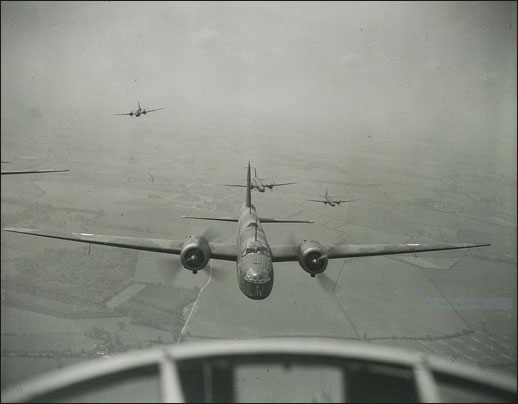As we approach the end of 2017 here at Loch Ness, we also reflect back on a day 77 years ago and a story of bravery and sadness.
At 1500 hours, on New Year’s Eve, 1940, a Wellington bomber code name “R for Robert” left its base at Lossiemouth on a training flight around the north of Scotland.
Its flight path would take the aircraft from the east coast out to the inner Hebrides and then through the Great Glen to north of Inverness and back to base.
The flight time was estimated to be about two hours. Weather conditions were very cold with frequent low-level snow showers.
We can imagine Squadron Leader Marwood-Elton and his crew would be looking forward to completing the training flight before celebrating a good Scottish New Year.
However, “the best laid schemes of mice and men gang aft agley” in the words of our national poet Robert Burns.
As the Wellington was flying over the Monadhliath Mountains, a fierce snow storm blew up and the starboard engine failed.
The Squadron Leader ordered the recruits to bale out while he and Co-Pilot Slatter stayed on board the lumbering bomber. Over the mountains before them lay Loch Ness, a finger of water 24 miles long … perfect to ditch in.
In the darkness, flying parallel to the A82 road, they heroically fought with the Wellington’s controls and used all their piloting skills to successfully land R for Robert on the surface of Loch Ness.
Marwood and Slatter unhitched a dinghy and rowed ashore as the great beast of a plane slowly sank to the depths of the loch.
Tragically, the rear gunner, Sgt. Fensome, did not survive the brave bale out as his chute failed to open.
And, while we reflect today upon the sad loss and the bravery of everyone on board, that is not the end of the story for R for Robert.
In 1976, one of the monster hunters from America-Klein Associates Inc. recorded the shape of an aircraft off shore using sonar. This was the Wellington lying in the deep silt of Loch Ness.
Then, in September, 1985, after much discussion, organisation, planning and a huge amount of effort, R for Robert was duly lifted from its watery bed by means of buoyancy bags.
The aircraft was brought out of the water at Bona Lighthouse, which we pass every day on our cruises from Dochgarroch Lock and Tomnahurich Bridge on The Jacobite Queen and The Rebel.
The Wellington is now partially restored at Brooklands Museum, in Surrey, for all to see.
As a strange twist to this story, Brooklands has another connection to Loch Ness. It involves John Cobb, who was tragically killed in his boat Crusader, on 29 September, 1952, during a world water speed record attempt on Loch Ness. As it happens, Cobb held the motor racing track record at Brooklands, having reached 143.44 mph in his Napier Railton, in 1935.
So, while we all look forward to a good New Year, please also join us in reflecting on all those brave men and, of course, a lasting symbol to their memory – R for Robert, the beast they raised from Loch Ness.

